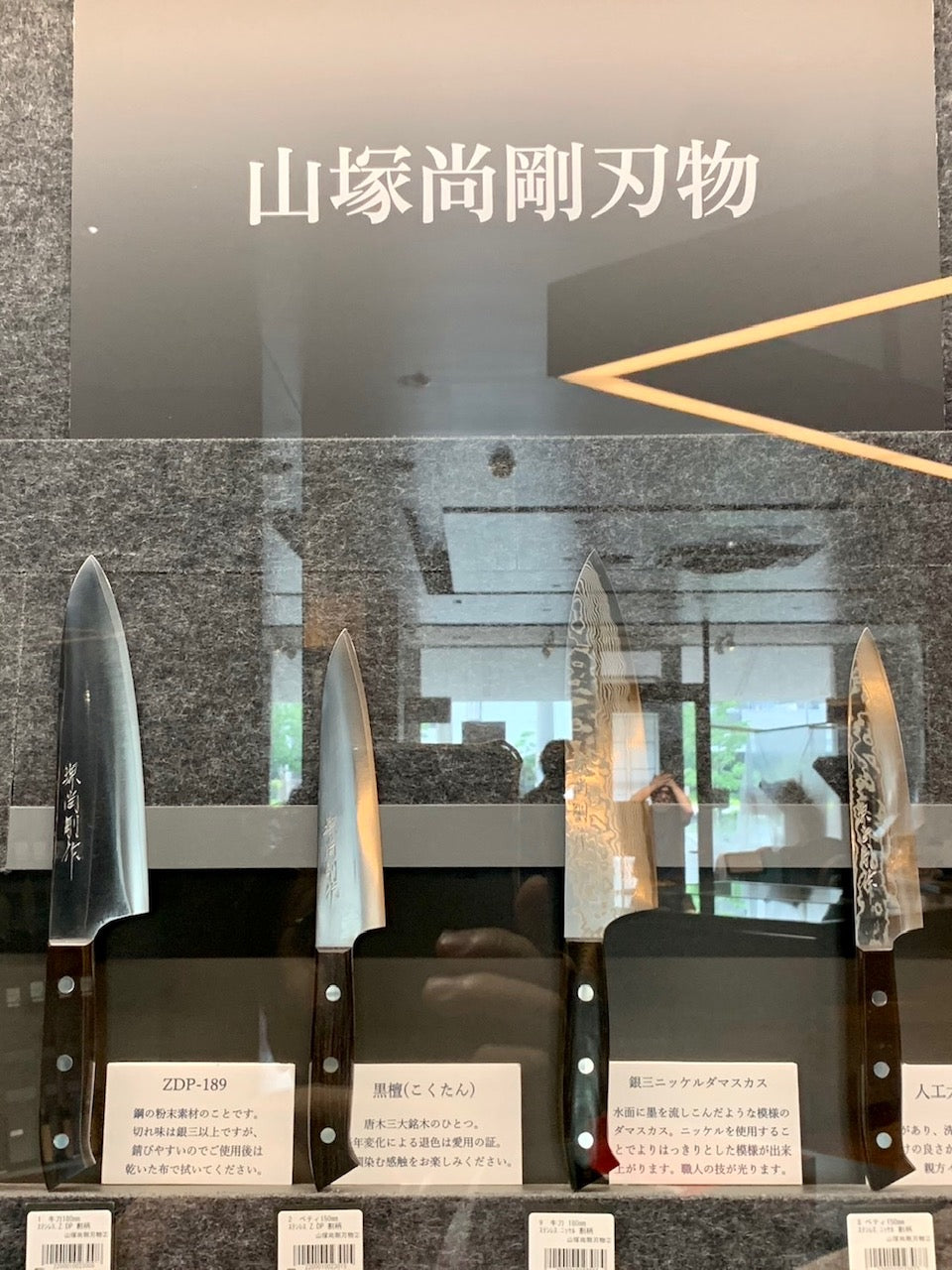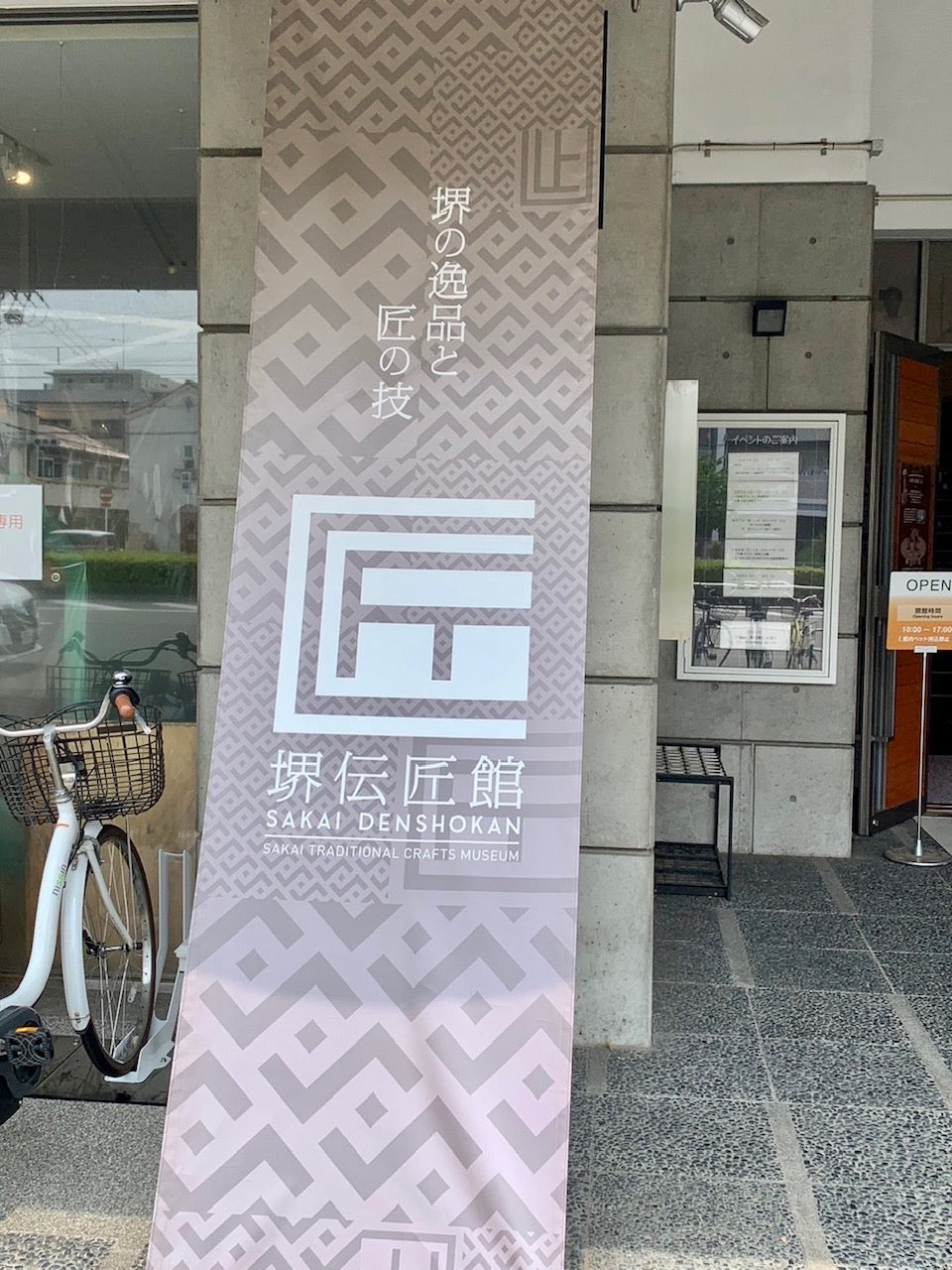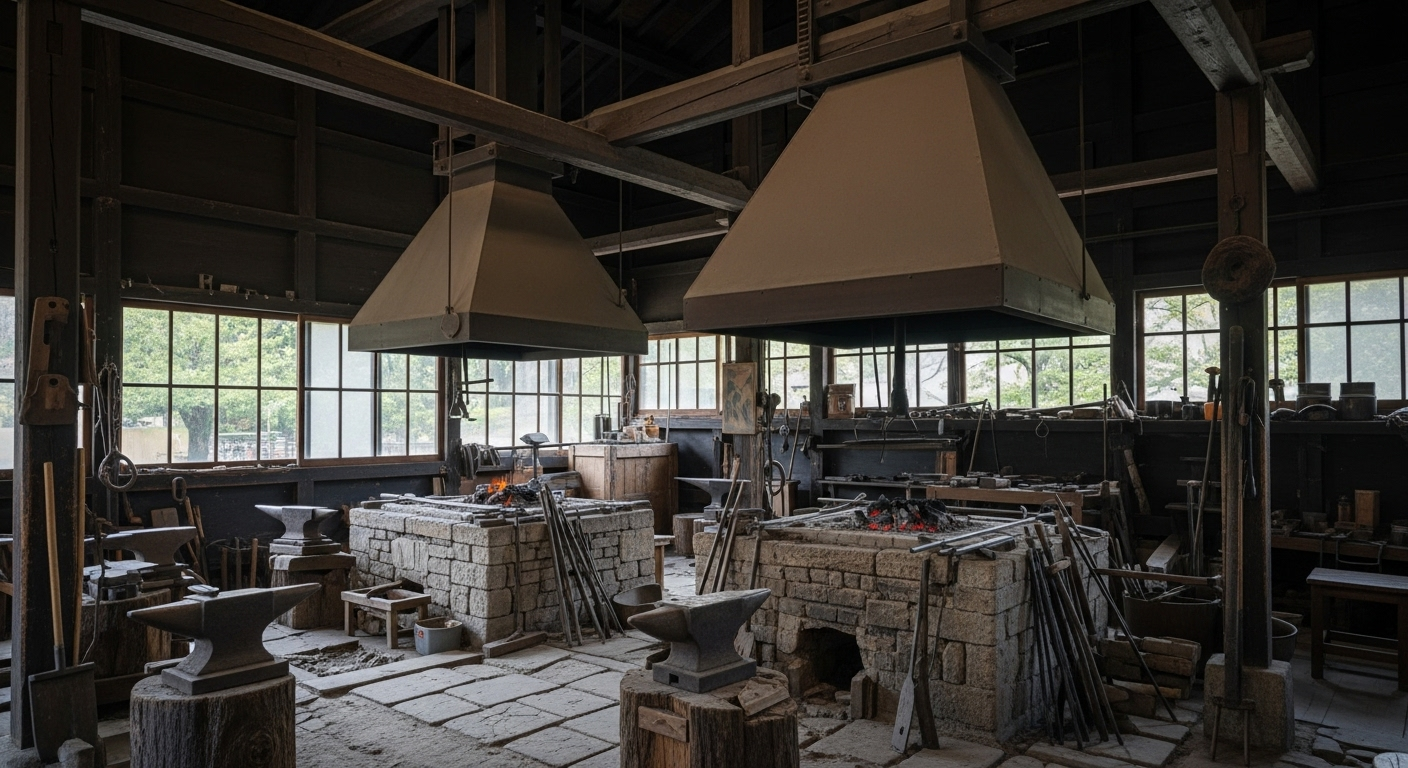
Walking Through the Town of Blades: A Visit to Denshokan in Sakai
-
JUNE 2, 2024
-
It’s been over twenty years since I began living a life centered around Japanese knives. Though my fascination with blades began during my early culinary training, it wasn’t until I met a particular craftsman that I truly began to understand the depth of this world.
At the time, I was still young and naive. A knife was just a tool — something that needed to cut well and feel comfortable in hand. That was all. But then, this craftsman looked me in the eye and said, “A knife is a reflection of your hand — and your heart.” That line never left me.
This time, my journey took me to Sakai City in Osaka, home to centuries of craftsmanship. And at the heart of this historic town lies the Denshokan — Sakai Traditional Crafts Museum, where the true spirit of Japanese blades still thrives.
What Is Sakai, the Crossroads of Traditional Crafts?
-
Have you heard of Sakai? People in Kansai might know it as the "city of incense," but it’s also renowned throughout Japan as a center for swords and kitchen knives.
From the medieval era, Sakai flourished as a hub for international trade. Craftsmen, merchants, and intellectuals passed through, giving rise to a unique local culture—out of which Sakai’s blade tradition was born.
Today, the torch of this tradition is carried by Sakai Denshokan.
-

What Kind of Place Is Sakai Denshokan?
-
Formerly known as the “Sakai Traditional Crafts Museum,” the facility was renamed and renewed in 2022. It now stands as a cultural hub where visitors can experience and learn about Sakai’s traditional industries.
What struck me first was that admission is free. Honestly, I didn’t expect to find such well-curated exhibits without a price tag. It’s perfect for a quick visit during a trip or a cultural outing on a day off. Truly, it’s an open window into tradition for everyone.
-
The facility has two floors. The first floor features a shop selling local products—hand-forged knives, incense, traditional sweets, and more. The second floor houses the exhibit area “Sakai Hamono Museum CUT,” which is a paradise for blade lovers.
-

The types of knives and their uses are displayed.
-

Yanagiba
-

Deba
-

The knife for cutting bonito
-

Gyuto
-

Petty
-

Usuba
-

Various types of knives and their uses are clearly displayed using actual items, photos, models, and illustrations.
-

The first floor is dedicated to the display and sale of knives.
-

The first floor is dedicated to the display and sale of knives.
The Knife That Moved My Heart in the Museum
-

As I walked upstairs, the first thing that caught my eye was a massive blade—almost more a sword than a knife. It turned out to be a maguro-bōchō (tuna knife), nearly a meter long. The sheer presence of it felt samurai-like.
-
A staff member mentioned that “many people take photos of it because it’s so impressive.” I can relate—I took one too (laughs).
-
This giant knife is used to butcher an entire tuna, and interestingly, the forging and tempering techniques are closely related to those used in Japanese swordsmithing. It made me realize that even in the act of preparing fish, the spirit of Bushidō still lives on.
The Fascinating "Regional Logic" of Unagi Knives
-

I couldn’t help but exclaim "Wow!" when I saw the regional variations of eel knives (unagi-bōchō).
-
In Kanto (Tokyo), there’s the “Edo-zaki,” a knife with a sharply angled tip designed for slicing from the back. Its short handle makes it feel almost like using a brush.
In Kansai (Osaka), they use the “Osaka-zaki,” a hefty knife with the metal extending into the handle—suited for splitting the eel from the belly side, as is the regional custom.
In Nagoya and Ise, the “Nagoya-zaki” features a rounded rectangular shape designed to avoid damaging internal organs. It’s a beautiful fusion of Kanto and Kansai styles—reflecting the cultural crossroads of the region.
In Kyoto, there’s a version that looks almost like a Chinese cleaver—versatile enough to process other fish as well.
-
These diverse designs show the depth of Japanese food culture, where cooking techniques and tools have been refined by the history and values of each region.
Knives as a Lifestyle
-

-
Japanese knife culture is rooted in a philosophy of "living alongside daily life."
It’s not just about sharpness. A good knife fits the hand, lasts for years, and even beautifies the cook’s gestures. In that sense, a Japanese knife isn’t just a tool—it’s a reflection of your lifestyle.
In the act of cooking, tools are both the means and the end. A good knife changes how you cook. Cooking changes how you live. That chain of values, I believe, is what supports Japanese culinary culture.
In Closing: A Place to Visit at Least Once in Your Life
-

-
Sakai Denshokan is not just a museum. It is filled with living techniques, living culture, and moments of realization that we need in our modern lives.
Whether as part of your travels or a learning experience, I strongly encourage you to visit. It might not only change the way you see knives—but also the way you see your life and values.
As for me, this visit reminded me that I still have much to learn, and that I want to continue honoring every knife with care and respect.
Sakai Denshokan: A Living Tradition
-

Sakai Denshokan is not just a museum —
it is a living gateway to Japan’s knife culture,
where tradition, craftsmanship, and your own life connect. -

One of the knives displayed was by Tadayoshi Yamatsuka which is also available for purchase at KIREAJI.

One of the knives displayed was by Shogo Yamatsuka, which is also available for purchase at KIREAJI.

Reference Information
Visiting the Sakai Denshōkan and the Sakai Hamono Museum CUT allowed me to appreciate the depth and charm of Japan's traditional industries. The first floor is a knife display and sales area, while the second floor features exhibits where you can learn about the history of Sakai knives, their manufacturing process, types of knives, and how to use them. I highly recommend visiting if you have the chance. Admission is free.
Sakai Denshōkan
(SAKAI TRADITIONAL CRAFTS MUSEUM)
Address:
1-chōme-1-30 Zaimokuchōnishi, Sakai Ward, Sakai, Osaka 590-0941, Japan
TEL:
+81-72-227-1001

The Soul of Craftsmanship
-
Recognizing Yourself Cultivates the Power of a Craftsman
As a craftsman shaping traditional Japanese knives, I have learned one truth above all: the strength of a craftsman begins with recognizing one’s own strength. In our work, doubt is constant—every strike of the hammer, every stroke of the whetstone can make us question our ability. Yet, the moment we acknowledge our own power, that recognition transforms into the confidence needed to refine our craft further.
-
Our task is not only to perfect what is visible, but also to devote ourselves to the unseen details—the subtle lines, the quiet adjustments that only the craftsman knows. No matter how small the task, believing in our abilities allows excellence to take form. When we recognize our worth, we move forward. And in that forward step, our knives are infused with passion, carrying our spirit into the hands of those who use them.
-
As artisans, we do more than sharpen steel—we also sharpen ourselves. By accepting and acknowledging who we are, we create work of true value. That strength, accumulated over time, takes form not only in the knives we make, but in the legacy we leave to the world.

Experience the sharpness trusted by 98% of Japan’s top chefs — handcrafted in Sakai City.
Through our exclusive partnership with Shiroyama Knife Workshop, we deliver exceptional Sakai knives worldwide. Each knife comes with free Honbazuke sharpening and a hand-crafted magnolia saya, with optional after-sales services for lasting confidence.
KIREAJI's Three Promises to You
-

1. Forged in the Legacy of Sakai
From Sakai City—Japan’s renowned birthplace of professional kitchen knives—each blade is crafted by master artisans with over six centuries of tradition. Perfectly balanced, enduringly sharp, and exquisitely finished, every cut carries the soul of true craftsmanship.
-

2. Thoughtful Care for Everyday Use
Every knife includes a hand-fitted magnolia saya for safe storage. Upon request, we offer a complimentary Honbazuke final hand sharpening—giving you a precise, ready-to-use edge from day one.
-

3. A Partnership for a Lifetime
A KIREAJI knife is more than a tool—it is a lifelong companion. With our bespoke paid aftercare services, we preserve its edge and beauty, ensuring it remains as precise and dependable as the day it first met your hand.
























